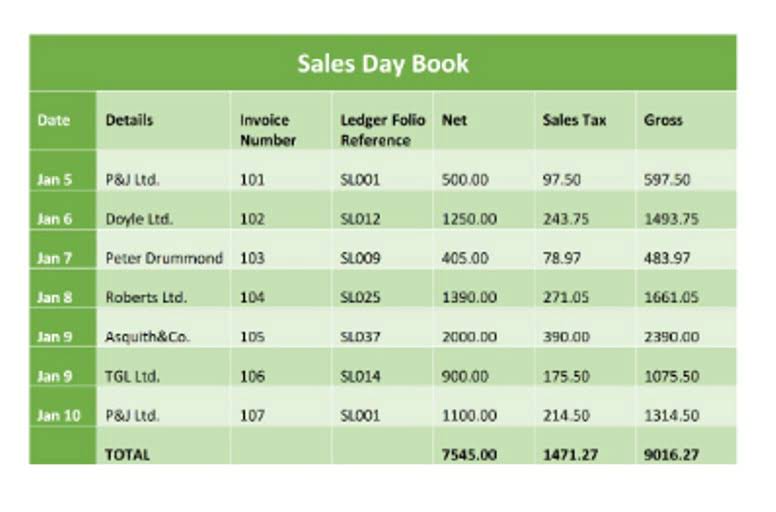9 Types of inventory PLUS: Inventory Management Tips

Inventory can be categorized in three different ways, including raw materials, work-in-progress, and finished goods. Consumer demand is a key indicator that can determine whether inventory levels will turn over at a quick pace or if they won’t move at all. Higher demand typically means that a company’s products and services will move from the shelves into consumers’ hands quickly, while weak demand often leads to a slow turnover rate. Inventory calculation is vital for profitability, operational efficiency, and customer satisfaction.
Inventory in Accounting- How it Can Help Your Business
- Similarly, the anticipation stock includes finished goods and raw materials a business purchases to prepare for the changing trends in sales and production.
- Each production unit undertakes the process of making a raw material into a finished product.
- Cloud-based inventory refers to goods managed by a cloud-based inventory management system.
- The work-in-progress products are then converted into finished goods to be sold to the consumers.
This method aligns with the natural flow of inventory in many companies and is commonly used in industries where product expiration is a concern. FIFO can result in higher profitability and tax obligations as older, lower-cost inventory is assigned to COGS first. Inventory control empowers companies to collect the maximum amount of profit. It enables them to minimise the investment made in stock, allowing companies to best evaluate their ongoing assets, account balances, and financial reports. It is important because it prevents exuberant costs because of purchasing too much or inessential inventory, rather prioritising the obligatory inventory. With the right solution to meet inventory accounting challenges, you can make better reports, which leads to better business decisions.
Days’ Sale Inventory Formula (DSI)
- The benefit to the supplier is that their product is promoted by the customer and readily accessible to end users.
- This is the buffer stock that guards against unexpected demand spikes or supply chain hiccups.
- Moreover, the safety stock has a cost of ownership, and it helps companies to maintain customer satisfaction by completing order fulfillment on time.
- It’s sometimes also described as the amount of stock expected to be left over after a set of predefined production tasks.
- Because any inventory shrinkage counts as a discrepancy in accounting it must be balanced in journal entries with an inventory write-off.
Building strong relationships with suppliers is essential for efficient inventory management. Collaborating with suppliers can lead to better pricing, timely deliveries, and improved inventory availability. Clear communication, data sharing, and mutually beneficial agreements can help businesses maintain optimal inventory levels and minimize supply chain disruptions. Raw materials are the items manufacturers use to make their finished products. Raw materials can be commodities they buy on the open market or extract themselves or components that are used in manufacturing.

Raw Materials and Finished Products

However, it can prove to be one of the most expensive assets of your business if managed poorly. A sensible approach is to determine landed costs as soon as possible on the basis of all the available information. This involves using actual supplier and broker charges and an estimate of shipping costs based on previous charges. Inventory valuation is carried out considering the valuation guidelines and methods as prescribed in the accounting Bookstime standard. More importantly, you should make sure you have a standard procedure in place for receiving inventory. Some types of inventory are intangible – but still important – meaning they’re easily forgotten.
- Carrying raw materials inventory for longer periods of time can eat away your business profits.
- Manufacturers must consider the flow of inventory from raw materials to finished goods and choose an accounting method that accurately reflects this flow.
- Businesses should establish audit procedures and schedules to maintain the integrity of their inventory data.
- Accurate classification also saves employees time by simplifying inventory audits and cycle counts, freeing them up for higher-level tasks.
- Developed by Toyota in the 1970s, the JIT system’s critical aspect is to ‘pull’ inventory through the supply chain rather than ‘pushing’ it.
- Inventory can be categorized in three different ways, including raw materials, work-in-progress, and finished goods.
Beginning inventory, also called opening inventory, refers to the total value of a company’s inventory at the start of each accounting period. In short, inventory accounting directly impacts how profitably your business operates. You need it – not just for tax purposes, but types of inventory accounting to gain visibility across the financial standing of your business and your products.


These are inventory items that you use to keep your factories running smoothly. MRO goods can include things like employee uniforms, cleaning, and office supplies, as well as any materials you use to repair or maintain manufacturing equipment. Putting your inventory into the right buckets can make your accounting life much easier, but the types of inventory you hold can often depend on your inventory management philosophy.
- The Safety Stock control method is a strategy that involves maintaining a buffer of extra inventory to guard against variability in demand or supply.
- This is because excessive raw materials inventory could result in spoilage, damage, theft, obsolescence,etc.
- For growing businesses, efficiently utilizing inventory is necessary for controlling costs and protecting margins.
- Wholesalers may opt for FIFO or weighted average methods depending on their specific requirements.
- Therefore, you should have enough inventory so that various business activities are not adversely affected.
- One of its benefits over other methods is that it makes it easier to track and consistently calculate inventory value by using a blended average.
The IRS also classifies merchandise and supplies as additional categories of inventory. Inventory management faces challenges that can disrupt efficiency, increase costs, and result in missed opportunities. Identifying these issues and applying effective strategies is crucial for maintaining accuracy and control. DSI measures the average time needed to sell inventory, reflecting liquidity and cash flow efficiency. Accordingly, A Class inventory pertains to inventory items high in value but low in quantity. B Class category relates to stock items more or less equal in value or quantity proportionate to the total inventory.
Cash basis accounting for inventory
Providing real-world examples, you’ll have the opportunity to practically apply the explored concepts. Lastly, the article dispels common misconceptions about what comprises an inventory, concluding with an in-depth look at diverse inventory control systems. This resource serves as an insightful read for anyone keen to expand their knowledge on inventory in business. Manufacturing inventory includes raw materials, work-in-progress (WIP), and finished goods. Inventory calculation involves strategic approaches tailored to a business’s operational needs, technology, and scale.
Inventory accounting helps businesses determine the value of their stock on hand and break down the costs of purchasing, producing, and managing inventory items. MRO inventory refers to all the goods your business consumes to make products recording transactions that do not go into the final product. It includes indirect raw materials, tools and equipment, and anything used to repair or maintain your facilities.